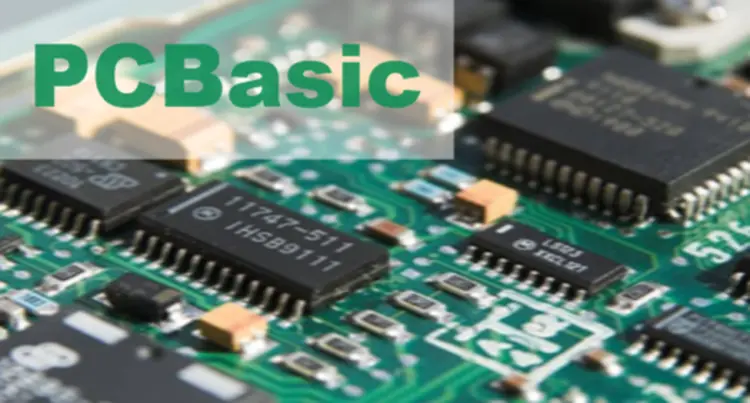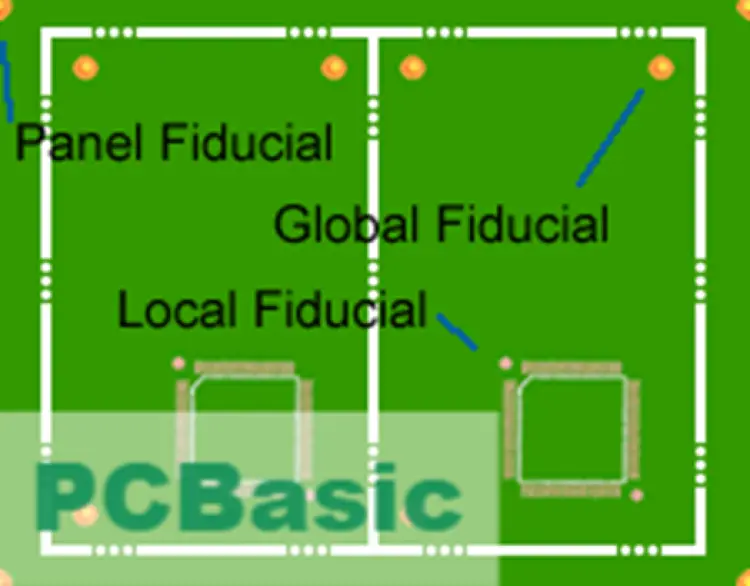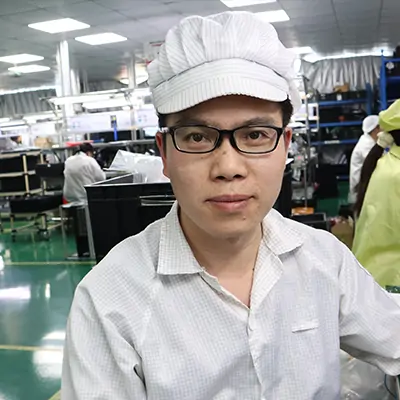Global high-mix volume high-speed Shenzhen PCBA manufacturer

Ru
9:00 -18:00, Mon. - Fri. (GMT+8)
9:00 -12:00, Sat. (GMT+8)
(Except Chinese public holidays)





Global high-mix volume high-speed Shenzhen PCBA manufacturer

Ru
9:00 -18:00, Mon. - Fri. (GMT+8)
9:00 -12:00, Sat. (GMT+8)
(Except Chinese public holidays)





HomePage > Blog > Knowledge Base > Understanding PCB Fiducial | Are Fiducial Markers Necessary with Modern Technology?

If you've been in the PCB industry long, you would know how important fiducial markers are. If not familiar with that, let us introduce them to you! Fiducials are small yet vital markers on the PCB, serving as reference points for your automated machines. However, as technology advances, some might wonder if fiducial markers are still necessary. These metrics might seem like little, but they are essential to high-quality output. Besides, you will also get a speedier and more efficient production process with them. Amazed by their importance? Well, that's just the overview. Let's dive in to discover more about fiducial marks in PCB design.
Fiducial markers in PCB are small reference points placed on automated assembly machines. They are usually made from materials that are easily detectable by the vision systems. For instance, it mostly uses:
Copper: For its highly reflective and detectable quality.
Surface Finish: To prevent oxidation and improve durability.
Not only this, they also serve as alignment references for pick-and-place machines. With them, you'd be at ease since no more of your designs are misaligned. Mostly, these machines use cameras to detect the fiducial points and align the PCB correctly, ensuring that each component is placed with high precision.
Now that we know what fiducial point is, you might be wondering how they work. So, let's see that.
1. Camera Detection
Designers know that pick-and-place machines and optical inspection systems work on vision systems for their operation. When you incorporate fiducial marks, it helps the machine detect them and seemingly align your PCB design. To put it simply, these markers, which are usually circular pads, give cameras a clear, consistent reference point.
2. Alignment and Positioning
Once your fiducial points are detected, the real game begins. The machine uses them to align your PCB design. Why is this alignment necessary when there is other modern technology available? It's because it ensures that the PCB is positioned correctly in accordance with the machine's inspection system.
3. Compensation for Variations
Besides the alignment thing, they also help compensate for any variations or distortions. It might help you relocate your
a. Slight warping
b. Stretching
c. Shifting of the PCB materials.
So, with fiducial marks, you know that all your boards are placed perfectly on one another.
4. Verification and Quality Control
In addition to aiding in component placement, fiducial markers are also used during automated optical inspection (AOI). After components are placed and soldered, the AOI system scans the PCB again, using the fiducials to verify that all components are correctly aligned and soldered. This ensures that the PCB meets quality standards before moving on to the next production stage.
Let's have a look at a quick reference for selecting the appropriate fiducial size based on your PCB design.
|
Fiducial Diameter |
Application |
Recommended Placement |
|
1.0mm |
Ultra-fine pitch components, HDI (High-density Interconnect) PCBs |
Near critical fine-pitch components, micro-BGAs |
|
2.0mm |
High-reliability PCBs, complex assemblies |
Corner placement on large PCBs, or panel fiducials |
|
3.0mm |
Large-format boards, panelized production |
Panel fiducials, or global alignment on oversized PCBs |

There are three types of fiducial markers.
1. Global Fiducial Marker
Global markers, as you might think, works globally. This means that they are used to align the entire PCB. With them placed at three different spots, you can increase the accuracy of the manufacturing process.
They are used to increase the accuracy of the manufacturing process. Moreover, when it comes to accurate triangulation, global markers offer a far more reliable method than panel markers. Well, with every pro, there is always a con. It might sound all good to incorporate global markers since they work on the entire PCB, but with them, the processing time is much higher, which we usually do not want with the longer batches.
2. Local Fiducial Marker
Unlike global fiducials, local fiducials are placed locally wherever you want to. However, if you ask us, we recommend you to place them near specific components or areas of the PCB that require high-precision alignment. For instance:
· BGAs - Ball Grid Arrays
· QFPs - Quad Flat Packages
· QFNs - Quad Flat no lead
Here at PCBasic, we use local markers in complex designs where certain components demand higher placement accuracy than others.
3. Panel Fiducial Marker
Panel fiducial markers are above all, when it comes to speeding up the manufacturing process with higher accuracy. They work on panels and not individual circuit boards. So, we recommend using panel markers for medium or large-sized PCB components.
For automated machine assembly to yield optimal results, PCB designers must ensure that fiducial markers are correctly designed. The following are crucial points for applying fiducial markers on the board:
· On a non-drilled copper layer, the fiducial marks have to stay in a circle. Additionally, they must be devoid of any solder mask.
· Put the marker's diameter between 1mm and 3mm.
· Use at least three fiducial markers for the highest level of precision.
· If the space is limited, stick to 1 only.
· Place them at least 8mm away from the board's edge.
As technology advances, we're seeing new drilled holes in the PCB industry. But, they are not accurate for proper alignment because of their variation in size, shape, or location. We still believe that fiducial points make the manufacturing process no-frills.
Especially in high-density designs, where components are placed very close to each other, the importance of fiducial marks becomes more apparent. They provide a consistent framework, ensuring that each component is correctly oriented and positioned, which is essential for achieving high assembly yields and reducing costly rework.
Fiducial marks remain indispensable in PCB assembly, even with the advancements in modern manufacturing technology. Here's why fiducial points continue to be essential.
1. Accuracy
With fiducial reference points, the automated machine can ensure that the components are placed precisely where they should be on the PCB. This is especially important when working with PCBs that have small components or little surface area.
2. Precise Inspection
With them, PCB designers have the ability to verify correct soldering and component alignment. The fiducial marks allow for a visual inspection of the PCB following assembly. This can be a game-changer for critical applications such as military electronics and aerospace.
3. Cost Saving
Using reference marks can help you save money by reducing the likelihood of errors and defects, which in turn decreases your expenses. If not, the errors might require discarding the whole PCB.
Fiducial markers are tiny but crucial parts in printed circuit board design and manufacturing. During assembly, the markings help ensure precise component alignment and placement by serving as reference points for automated machinery. Despite the advancement in technology, they still remain number one for PCB designers.

Assembly Enquiry
Instant Quote